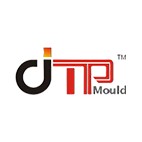Is Sampling And Testing For Indoor Mould Necessary?Yes., such as Penicillium chrysogenum and Penicillium aurantiogriseum., Fusarium spp.85 are colonized by Aspergillus versicolor while those with water activity values of 0. Moulds will grow virtually everywhere indoors as long as nutrients and conditions for growth are favourable., https://www.jtpmoulds.com/product/household-mould/bucket-mould/ Exophiala spp. Materials with a water activity value ranging from 0.85 or slightly less are colonized by Aspergillus versicolor, Eurotium spp.How Can We Control Mould Growth?Mould growth can be controlled by maintaining indoor relative humidity within the range of 30-60 % and ensuring that any water leakage or flood is attended to immediately. The building occupants need assurances that they are not being exposed to moulds that may cause health problems., Ulocladium spp. Use of biocides to control mould in indoor environment is generally not recommended due to associated health risks and the fact that these chemicals may not be effective against all moulds and are effective for only a limited period of time. Growth of these moulds is an indication of very damp to wet conditions. We commonly see moulds in the kitchen, bathrooms, ceilings and in the basements of houses and other buildings. Fortunately, not all these are harmful to most people., Stachybotrys spp.90 - 0. The level of moisture (usually referred to as water activity) in building material determines not only whether mould will grow or not but also the types that colonize the material. Moulds require moisture, nutrients and suitable temperature for them to grow., and yeasts such as Rhodotorula spp. Testing is important so as to:to determine the presence or absence of airborne spores, their composition and concentration in situations where occupants experience mould related ill health but with no obvious mould growth,to determine if spores from visible wholesale plastic bucket suppliers mould growth sources had become airborne,to detect and quantify certain mould species, to determine the efficacy of mould remediation..lower respiratory symptoms such as coughing and wheezing,respiratory infections such as aspergillosis,allergic reactions, including allergic asthma and bronchitis,unspecific symptoms, such as eye and skin irritation, fatigue, headache, nausea, and vomiting., Wallemia spp.90 (equivalent to 90% relative humidity) are usually colonized by strains of Aspergillus fumigatus, Trichoderma spp. Damp materials with a water activity value equal to or greater than 0.Which Are The Common Moulds And Why Do They Grow Indoors?More than 150 mould species have been reported from indoor environment
Jtp Mould is known as one of the best China crate mould manufacturers and plastic furniture mould factory
for plastic household items, such as chair mould, crate mould, bucket mould, medical mould
and so on.
for plastic household items, such as chair mould, crate mould, bucket mould, medical mould
and so on.

コメント